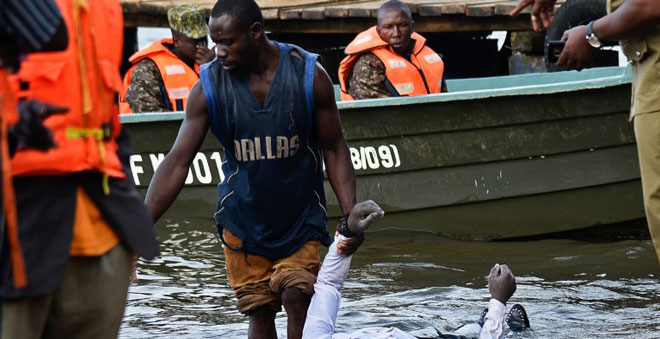
For any vessel to be allowed on the lake, he says, it should be of known capacity and with life jackets that fit that capacity and an additional 20% for reserve.
Inspection of vessels according to international guidelines should be done every year and if maintenance works are done before a year elapses, there should be re-inspection.
He says ensuring that the boat has marine insurance is also key since this cannot be issued unless the Ministry has granted the boat a certificate of sea worthiness.
Mark Sali, the communications manager of Uganda National Roads Authority (UNRA) which operates all government ferries told The Independent that they are insured and have sea worthiness certificates. “Our challenges come on market days but our ferries have life jackets, life rafts, and life rings,” he said.
Opiro adds that because of low capacity by the regulators since marines are just a small department, some vessels delay to get permits even when they conform to all standards.
He cites an example of MV Pearl and MV Ssesse ferries, under KIS, which have over seven months failed to get a permit even when they meet all the requirements.
“These regulators are killing the marine sector. They seem to be focusing their energy in wrong places. Let them improve their positions. People should meet basic standards”.
The Ministry of Works had in 2014 started a process to present a bill in parliament to regulate all transport operations on Uganda’s water bodies. The plan was to merge all the laws governing water transport – the Inland Water Transport (Control) Act revised edition 1964 and The Vessel (Registration) Act 1904 and the Ferries Act into one law.
The law would put into consideration all the issues in that industry since the old ones are considered obsolete, something that continues to compromise maritime safety. But since then, nothing much has happened even after a consultant was hired to study the old laws and advise accordingly.
Opiro says Lake Victoria is the only water body in Uganda on which transport operations are regulated by the Lake Victoria Transport Act, a relatively new law.
He adds that this law was enacted at the regional level in 2009 by the East African Community partner states. This law, in addition to regulating passenger and cargo safety, also looks into issues of the competence of the crew and licensing of vessels. “But even if it is there on paper, theirs is no enforcement,” he says.
Hours after the boat sank, images on social media of the Ugandans on the boat cruise making merry were being juxtaposed with pictures of some of their lifeless bodies ashore after they were retrieved by first responders.
A statement from the Office of the Prime Minister on Nov. 25 said marine units of the Uganda People’s Defence Forces (UPDF) and Uganda Police had rescued 26 people.
 The Independent Uganda: You get the Truth we Pay the Price
The Independent Uganda: You get the Truth we Pay the Price




hi!,I love your writing so a lot! percentage we keep in touch more approximately your article on AOL?
I need a specialist in this space to solve my problem.
Maybe that’s you! Looking forward to peer you.